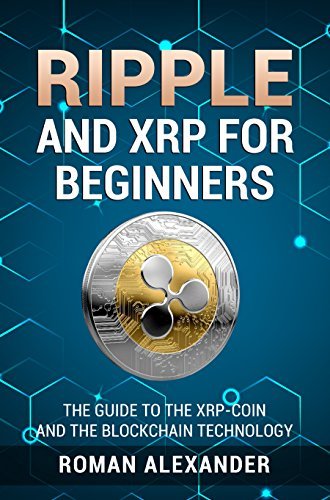What Is XRP? A Comprehensive Guide For Beginners

Table of Contents
Understanding XRP and Ripple
To truly grasp what XRP is, we need to understand Ripple, the company behind it.
What is Ripple?
Ripple Labs is a fintech company focused on enabling faster and more efficient global financial transactions. Its mission is to modernize the traditional cross-border payment system, which is often slow, expensive, and opaque. Ripple achieves this primarily through its RippleNet, a network of financial institutions using Ripple's technology to send and receive payments. A key component of RippleNet is the use of XRP, which we'll discuss shortly.
- RippleNet: A global network connecting banks, payment providers, and other financial institutions for faster and cheaper cross-border payments.
- Partnerships: Ripple has established partnerships with numerous major financial institutions worldwide, significantly expanding the reach and adoption of its technology. These partnerships demonstrate the growing interest in utilizing blockchain technology for financial transactions.
- Ripple vs. XRP: It's crucial to understand the distinction: Ripple is the company; XRP is the cryptocurrency token that operates within the Ripple network. While related, they are separate entities.
What is XRP?
XRP is a cryptocurrency and a digital asset native to the Ripple network. Unlike Bitcoin or Ethereum, XRP's primary purpose isn't solely as a store of value or a platform for decentralized applications (dApps). Instead, XRP serves as a bridge currency, facilitating faster and cheaper transactions between different currencies across borders.
- Bridge Currency: XRP acts as an intermediary, converting one currency to another more efficiently than traditional methods. This speeds up the settlement process and reduces costs.
- Speed and Low Fees: XRP transactions are known for their speed and low transaction fees compared to other cryptocurrencies, making it an attractive option for high-volume transactions.
- Faster Settlements: By utilizing XRP, financial institutions can settle payments almost instantly, significantly reducing processing times and operational costs.
How XRP Works
Understanding how XRP functions involves understanding its underlying technology.
The Ripple Protocol Consensus Algorithm (RPCA)
XRP uses a unique consensus mechanism called the Ripple Protocol Consensus Algorithm (RPCA). Unlike Proof-of-Work (used by Bitcoin) or Proof-of-Stake (used by Ethereum), RPCA is designed for speed and efficiency within the Ripple network. It's a distributed ledger technology (DLT), meaning transaction records are shared across a network of validators, ensuring transparency and security. This decentralized nature helps prevent fraud and manipulation.
- Distributed Ledger Technology (DLT): A shared, replicated, and synchronized database across multiple participants, enhancing transparency and security.
- Simplified Consensus: The RPCA simplifies the validation process, resulting in faster transaction confirmation times compared to other blockchain technologies.
Transactions and Fees
Sending and receiving XRP is relatively straightforward. Users can transfer XRP between wallets using various exchanges and platforms. Transaction fees are minimal, contributing to the cost-effectiveness of using XRP for cross-border payments. These low fees, combined with fast transaction times, make XRP a competitive option in the global payments landscape.
- Low Transaction Fees: Significantly lower than many other cryptocurrencies, making it suitable for high-frequency, small-value transactions.
- Fast Transaction Speeds: XRP transactions are processed much faster than traditional banking systems and many other cryptocurrencies.
XRP's Use Cases
XRP's primary strength lies in its application to international money transfers.
Cross-Border Payments
XRP's most significant use case is facilitating cross-border payments. By acting as a bridge currency, XRP enables faster and more cost-effective international money transfers compared to traditional methods like SWIFT (Society for Worldwide Interbank Financial Telecommunication). This is revolutionizing how financial institutions handle international transactions.
- Faster Transfers: XRP significantly reduces the time it takes to send money internationally.
- Lower Costs: Transaction fees are substantially lower than traditional banking fees.
- Increased Transparency: The use of blockchain technology makes transactions more transparent and traceable.
Other Potential Uses
While cross-border payments are its primary function, XRP also holds potential in other areas:
- Micropayments: The low transaction fees make XRP ideal for facilitating small, frequent payments.
- Decentralized Exchanges (DEXs): XRP could play a crucial role in the operation of decentralized exchanges, providing liquidity and facilitating trading.
- Other Fintech Solutions: The versatility of XRP opens opportunities for various fintech applications, expanding beyond its initial use case.
Investing in XRP
Investing in XRP, like any cryptocurrency, carries inherent risks.
Risks and Rewards
XRP's price is highly volatile, meaning its value can fluctuate significantly in short periods. This volatility presents both opportunities and risks for investors. It's crucial to understand that you could lose some or all of your investment. Never invest more than you can afford to lose.
- High Volatility: XRP's price can change dramatically, impacting potential returns and losses.
- Regulatory Uncertainty: The regulatory landscape for cryptocurrencies is still evolving, which adds an element of risk.
- Market Risk: The cryptocurrency market is susceptible to broader market fluctuations and external factors.
Where to Buy XRP
Beginners should only purchase XRP from reputable and regulated cryptocurrency exchanges. Thorough research is vital to avoid scams and fraudulent platforms. Always prioritize security and ensure the exchange has robust security measures in place.
- Reputable Exchanges: Research and choose exchanges with a strong track record and positive user reviews.
- Security Measures: Prioritize exchanges with robust security protocols to protect your investment.
- Avoid Scams: Be wary of unverified platforms or offers promising unrealistic returns.
Conclusion
XRP, a digital asset native to the Ripple network, offers a unique solution for faster and more efficient cross-border payments. Its speed, low transaction fees, and role in RippleNet make it a compelling alternative to traditional banking systems. However, it's crucial to remember the inherent volatility of the cryptocurrency market and the risks associated with investing in XRP. Understanding the difference between Ripple (the company) and XRP (the cryptocurrency) is essential.
Learning about XRP is just the first step. Further research into the cryptocurrency market and the Ripple network is crucial before making any investment decisions. Continue your journey into understanding XRP and the world of cryptocurrency by exploring [link to relevant resources]. Remember to always conduct thorough due diligence before investing in any cryptocurrency, including XRP.

Featured Posts
-
 Quick Facts About Michael Jordans Life And Career
May 01, 2025
Quick Facts About Michael Jordans Life And Career
May 01, 2025 -
 Veteran Dalla Star Priscilla Pointer Dies
May 01, 2025
Veteran Dalla Star Priscilla Pointer Dies
May 01, 2025 -
 Adonis Smith Homicide Trial Witness Recounts Events Leading To 2019 Death
May 01, 2025
Adonis Smith Homicide Trial Witness Recounts Events Leading To 2019 Death
May 01, 2025 -
 Aventure Cycliste Trois Jeunes Du Bocage Ornais Relevent Un Defi De 8 000 Km
May 01, 2025
Aventure Cycliste Trois Jeunes Du Bocage Ornais Relevent Un Defi De 8 000 Km
May 01, 2025 -
 Tonga Secures Spot In 2025 Ofc U 19 Womens Championship
May 01, 2025
Tonga Secures Spot In 2025 Ofc U 19 Womens Championship
May 01, 2025
Latest Posts
-
 The Future Of Luxury Cars In China Challenges And Opportunities For Bmw Porsche And Competitors
May 01, 2025
The Future Of Luxury Cars In China Challenges And Opportunities For Bmw Porsche And Competitors
May 01, 2025 -
 Los Angeles Wildfires A New Frontier For Disaster Related Gambling
May 01, 2025
Los Angeles Wildfires A New Frontier For Disaster Related Gambling
May 01, 2025 -
 La Landlord Price Gouging After Fires A Selling Sunset Star Speaks Out
May 01, 2025
La Landlord Price Gouging After Fires A Selling Sunset Star Speaks Out
May 01, 2025 -
 Are Bmw And Porsche Losing Ground In China A Look At Market Trends And Challenges
May 01, 2025
Are Bmw And Porsche Losing Ground In China A Look At Market Trends And Challenges
May 01, 2025 -
 Selling Sunsets Stars Name Condemns Post Fire Price Gouging In La
May 01, 2025
Selling Sunsets Stars Name Condemns Post Fire Price Gouging In La
May 01, 2025
